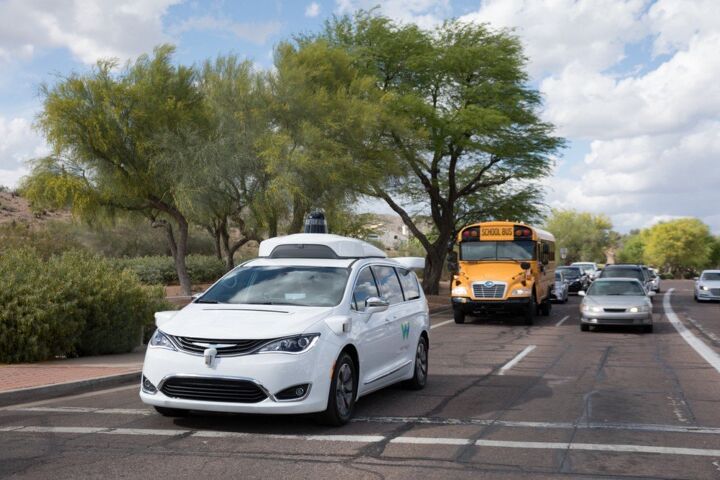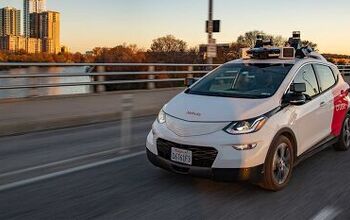Waymo Drops Comprehensive Self-Driving Safety Assessment, Tries to Educate Public

Autonomous cars have the unique capability to captivate the public’s imagination while simultaneously making them feel uneasy after considering things on a more practical level. A handful of self-driving related accidents, inconsistent development timetables, and a hands-off regulation strategy haven’t helped. But there is a sense that if the populace had a better handle on what went into making the technology work safely, some of their fears would be put to rest.
This week, Waymo — the relatively quiet autonomous vehicle arm of Alphabet Inc. — made an attempt to do just that. While also making a case for itself and the need for self-driving cars, the company released a 42-page outline of how its autonomous systems function. Written without a lot of technical jargon, the reading remains comprehensive and is one of the best attempts we’ve seen from a company to educate the public — rather than dazzle them with lofty promises.
Waymo has been on a bit of a safety kick this month. Taking into account that there is a good portion of the population that still feels anxious about self-driving cars, its new campaign is single minded in its goal to highlight safety and understanding. It’s probably some of the least duplicitous marketing we’ve ever seen and it serves not only to help Waymo, but any manufacturer hoping to sell autonomous vehicles in the years to come.
Don’t be fooled, though. These are still advertisements for the company. They just happen to be some of the most informative advertisements you’re likely to come across.
The safety report, which is available for perusal, splits Waymo’s definition of autonomous safety into five categories. It then explains how the tech firm addresses each one. The report cover everything from how the car makes driving decisions to ensuring there are adequate backups and technological redundancies to ensure a system failure won’t result in a crash.
Equally important, the report details the company’s existing sensor system — explaining what each lump of hardware is responsible for. It also gives a shorthand play-by-play of how its vehicles go about accomplishing a task and how the environment influences decisions.
While it may be a bit basic for experts, the document does provide a more inclusive look into autonomous technology and the company’s specific approach to it. Of course, that was always the point. Waymo is taking a very specific marketing path and, despite being a little dry, it’s likely the only way to truly ease consumer fretting. Getting into its extensive testing, validation processes, and various partnerships with advocacy groups like Mothers Against Drunk Driving and The National Safety Council wasn’t necessary. But it plants the seed into your brain that Waymo is doing more, doing it smarter, and doing it safer than its competition.
Whether or not that is the case, the company is offering transparency and an opportunity for the public to understand the technology better. That, in itself, ought to serve it well.
“Education begins with awareness, so we’re beginning this campaign with a series of digital and outdoor advertising campaigns in Arizona,” Waymo CEO John Krafcik said in a statement earlier this week. “Our hope is to grow this conversation into a national dialogue and provide opportunities for people to get up close with this technology.”
Waymo’s educational campaign is anticipated to coincide with the launch its first commercial ride-hailing service. Expected later this fall, the company’s self-driving Chrysler Pacifica minivans will engage in a testbed ride-haling service. However, Arizonians should be able to ride in one at the aforementioned outdoor events free of charge.
[Images: Waymo]

A staunch consumer advocate tracking industry trends and regulation. Before joining TTAC, Matt spent a decade working for marketing and research firms based in NYC. Clients included several of the world’s largest automakers, global tire brands, and aftermarket part suppliers. Dissatisfied with the corporate world and resentful of having to wear suits everyday, he pivoted to writing about cars. Since then, that man has become an ardent supporter of the right-to-repair movement, been interviewed on the auto industry by national radio broadcasts, driven more rental cars than anyone ever should, participated in amateur rallying events, and received the requisite minimum training as sanctioned by the SCCA. Handy with a wrench, Matt grew up surrounded by Detroit auto workers and managed to get a pizza delivery job before he was legally eligible. He later found himself driving box trucks through Manhattan, guaranteeing future sympathy for actual truckers. He continues to conduct research pertaining to the automotive sector as an independent contractor and has since moved back to his native Michigan, closer to where the cars are born. A contrarian, Matt claims to prefer understeer — stating that front and all-wheel drive vehicles cater best to his driving style.
More by Matt Posky
Latest Car Reviews
Read moreLatest Product Reviews
Read moreRecent Comments
- ToolGuy First picture: I realize that opinions vary on the height of modern trucks, but that entry door on the building is 80 inches tall and hits just below the headlights. Does anyone really believe this is reasonable?Second picture: I do not believe that is a good parking spot to be able to access the bed storage. More specifically, how do you plan to unload topsoil with the truck parked like that? Maybe you kids are taller than me.
- ToolGuy The other day I attempted to check the engine oil in one of my old embarrassing vehicles and I guess the red shop towel I used wasn't genuine Snap-on (lots of counterfeits floating around) plus my driveway isn't completely level and long story short, the engine seized 3 minutes later.No more used cars for me, and nothing but dealer service from here on in (the journalists were right).
- Doughboy Wow, Merc knocks it out of the park with their naming convention… again. /s
- Doughboy I’ve seen car bras before, but never car beards. ZZ Top would be proud.
- Bkojote Allright, actual person who knows trucks here, the article gets it a bit wrong.First off, the Maverick is not at all comparable to a Tacoma just because they're both Hybrids. Or lemme be blunt, the butch-est non-hybrid Maverick Tremor is suitable for 2/10 difficulty trails, a Trailhunter is for about 5/10 or maybe 6/10, just about the upper end of any stock vehicle you're buying from the factory. Aside from a Sasquatch Bronco or Rubicon Jeep Wrangler you're looking at something you're towing back if you want more capability (or perhaps something you /wish/ you were towing back.)Now, where the real world difference should play out is on the trail, where a lot of low speed crawling usually saps efficiency, especially when loaded to the gills. Real world MPG from a 4Runner is about 12-13mpg, So if this loaded-with-overlander-catalog Trailhunter is still pulling in the 20's - or even 18-19, that's a massive improvement.





































Comments
Join the conversation
I'm not anxious about fully automated cars. I just see no evidence that such a thing can be done in my lifetime. 90% automated? Sure. But that last ten percent is always the part that gets you Driving around dry well marked streets in the daytime is comparatively easy. Get back to me when you've got something that can do an unmarked one lane road on a rainy night
And we know that they're serious about safety, because little red-headed girl.